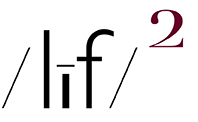(embiggenable)
(embiggenable)
(embiggenable)
(embiggenable)
(embiggenable)
“I really didn’t have much to teach. I didn’t really believe in it. I felt so strongly that everybody had to find their own way. And nobody can teach you your own way…. in terms of art, the only real answer that I know of is to do it. If you don’t do it, you don’t know what might happen.” ~ Harry Callahan
IN MY SEARCH FOR A NEW BOOK WHICH IS built around a large number of digital photographers’ work-to date an unsuccessful search-my search query yielded up a seemingly endless number of landfill-worthy how-to digital photography books and workshops. Many with an emphasis on how to make so-called “fine art” digital photographs.
Needless to write, none-and I repeat, NONE-of the self-proclaimed “experts” were making pictures that had any resemblance to fine art. You can take that assessment to the bank based upon the absolute fact that, to my extensive knowledge, there is not a single bona fide fine art photographer on the planet who would even consider the idea of making a how-to book. That’s cuz they understand well the verse of poet X. J.Kennedy:
The goose that laid the golden egg Died looking up its crotch To find out how its sphincter worked. Would you lay well? Don’t watch.
Or consider this from Robert Adams:
“Photographers are like other artist too in being reticent because they are afraid that self-analysis will get in the way of making art. They never fully know how they got the good pictures that they have, but they suspect that a certain innocence may have been necessary.”
iMo, how to operate camera or use editing software-or, for that matter, process film and make prints in a wet darkroom-can be taught. In any case, it ain’t rocket science but hooking up with someone who can show you ropes can speed things along. But, while anyone can figure out how to make a picture, getting to the point where one’s pictures are considered to be fine art is not so easy.
The hard work arrives in the form of identifying and then understanding how one sees the world. That is, both literally and figuratively. No one can do that but you. For some it comes easy, for some its much more difficult, and, dare I write it, for some it is impossible. ASIDE Re: impossible; that’s where the “rules” of photography come in handy for those can’t figure it out for themselves. END ASIDE
The danger involved in looking for “expert” solutions to the hard work issue is that, upon choosing an “expert” from whom to get advice on how to make “great” pictures, one is more apt to become a photo groupy of sorts-aka: follow the leader-than one who is apt to free one’s mind from the boundaries of conventional picture making. As Brian Cohen says in the film Life of Brian:
You’ve got it wrong. You don’t need to follow me. You don’t need to follow anybody. You’ve got to think for yourselves. You’re all individuals. You’re all different. You’ve got to figure it out for yourselves.
Of course, as Brian exhorts the crowd to be individuals-”yes, we are all individuals” they respond collectively-they repeat all he has to say as dogma / doctrine. I guess that explains why all the “experts” are so successful at finding recruits for following their picture making “wisdom”.
